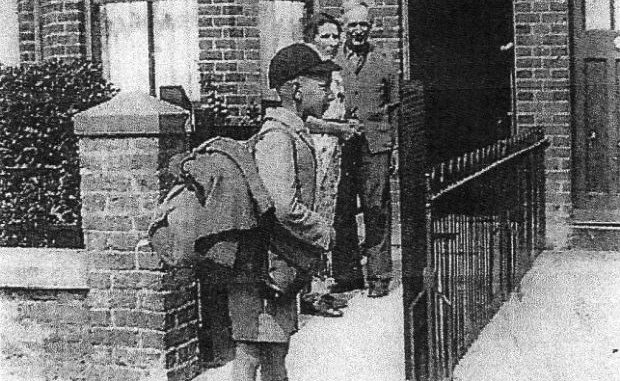
This is such a worrying time for all, including young people and their parents who, with the closure of schools, feel that futures are at stake. It’s quite understandable, but I should like to reassure you that there will still be a future and that you are making history at this time.
Eighty years ago something very similar was happening. When war was declared in September 1939 many children from the big cities were evacuated. Here in Thanet there was no immediate evacuation, but normal school couldn’t start again until each school had air raid shelters capable of protecting students. In Westgate St Saviour’s School was about six weeks late in starting the new school year.
Other schools were even later. I was told the story of a girl who had won a place at Clarendon House Grammar School and was so excited about starting the new year at a new school. Just days before she was due to start, her parents received a letter saying she must stay at home until the air raid shelters were built. Work would be sent for her to do at home.
She told how she tried to keep to a routine each day, but it was hard and she was very disappointed. She eventually started school in January 1940, only to have her education interrupted again in June, when the Thanet schools were evacuated after the fall of France and the evacuation from Dunkirk.
She spent the rest of the war in Stafford, sharing the Stafford Girls’ Grammar School, so that each pupil only attended school half time. Despite this she succeeded in passing her School Certificate and later her Higher School Certificate (similar to today’s GSCE and A levels), went on to university and trained to become a teacher.
I was told many stories like that. Other Thanet children were not evacuated because their parents preferred to keep them here with them. For some that was the end of their education altogether for no state schools were open in Thanet again until August 1941.
I myself was living in a small village near to Canterbury. In 1942 the Simon Langton Girls’ School which I attended was completely destroyed in the bombing raid of June 1, just days before the public exams were due to be taken. I don’t know the details of the arrangements made for them, as I was a mere first former, (Year 7), but there was a very high pass rate – I think 100% for Higher School certificate and everyone due to go on to university still was able to go. We younger ones were constantly reminded of that feat in later years, when there was any sign of slacking.
So – please try not to worry about the future too much. It will all come right one day and meanwhile be assured that we who have managed to survive so long despite everything – we didn’t have a virus to fear, but we did have bombs, so life was a little bit uncertain – are thinking of you are wishing you well.
Two suggestions for filling up the time whilst you are at home:
- Keep a diary. We historians have been so excited by diaries and letters from both World Wars which have been found. They can build up a picture of life at a certain time so well.
- Sort out family photos and identify the people in them. Scan them on to a computer if you can and label them with names, dates and locations. They will be invaluable to groups like the Westgate Heritage Centre that I represent or just of interest to you if you ever want to write your family history. Students take this opportunity of being thrown together as a family to ask questions of parents and grandparents – using the phone or social media if necessary.
May the future be brighter! Good Luck!
*Main image shows nine-year old Raymond setting off on June 2, 1940 for Salmestone School from where the pupils would be bussed to Margate station. He was a prime example of a child on the move. His school was evacuated to Rugelely in Staffordshire. He was billeted with a miner’s family.
In 1942 he passed the eleven plus exam and won a place at Chatham House Boys’ School. The first and second year pupils were at Uttoxeter, where they were housed in a former Sunday School. When he reached the third year he moved to Stafford where the older boys shared with King Edward VI grammar School.

